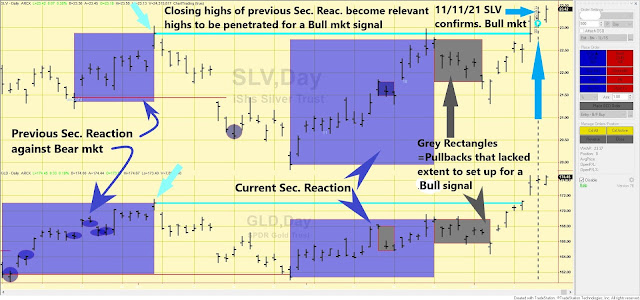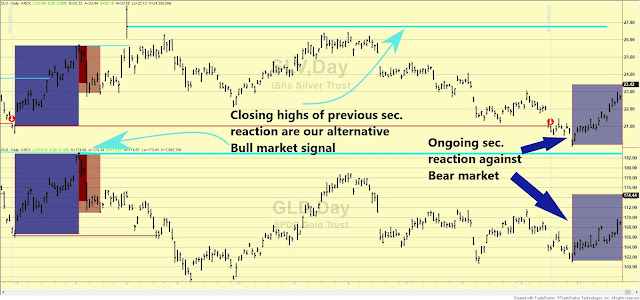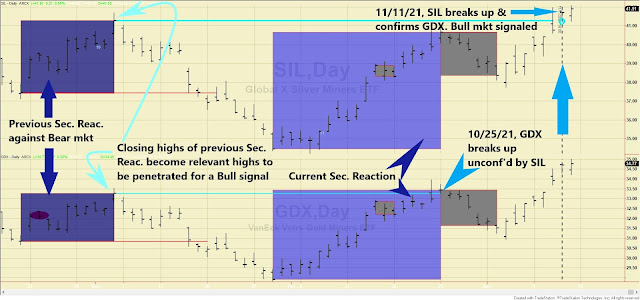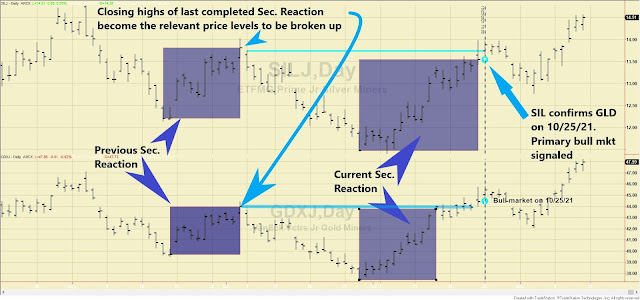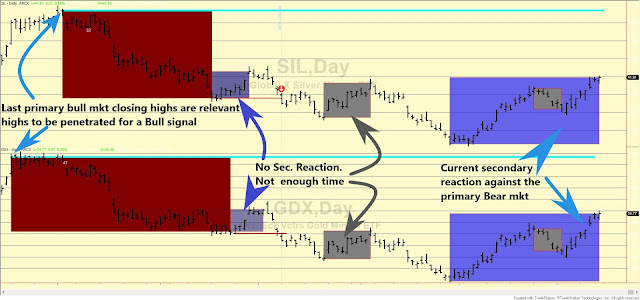Primary and secondary trends for precious metals, their metals, and US stocks remain bullish.
I am writing before the close. So please do your own homework.
US INTEREST RATES
General Remarks:
In this post, I provided a thorough explanation concerning the rationale behind my use of two alternative definitions to appraise secondary reactions.
TLT is the iShares 20 years + Treasury bond ETF. More about it here
IEF is the iShares 7-10 years Treasury bond ETF. More about it here.
Thus, TLT tracks longer-term US bonds, whereas IEF tracks middle-term US bonds. A bull market in bonds entails lower interest rates. A bear market in bonds represents higher interest rates.
A) Market situation if one appraises secondary reactions not bound by the three weeks and 1/3 retracement dogma.
The primary trend was signaled as bearish on 9/28/21, as was explained here.
TLT made its hitherto last primary bear market closing lows on 10/11/21. IEF did so on 10/21/21. Off their respective bear market lows, TLT rallied for 21 trading days until 11/9/21 and IEF for 13 trading days until 11/9/21. Accordingly, the time requirement for a secondary reaction has been met. And what about the extent requirement? As you can see in the table below, it has also been met, as both TLT and IEF rallied more than the Volatility-Adjusted minimum movement (VAMM).
Following the secondary reaction closing highs, both ETFs have declined for 5 trading days until 11/16/21. TLT’s drop exceeded the VAMM. IEF’s decline did not reach the VAMM. However, we don’t require confirmation for the pullback following a secondary reaction as was explained in depth here.
Therefore, a setup for a potential primary bull market
signal has been completed.
Now we have two alternative options:
a) Either the primary bear market lows (10/11/21 for TLT and 10/21/21 for IEF, respectively) are jointly broken down, in which case the primary bear market would be reconfirmed, and the secondary reaction would be terminated.
b) or, the 11/9/21 secondary reaction closing highs get jointly broken up in which case a primary bull market would be signaled.
Please find below the updated charts for TLT (top) and IEF (bottom). The blue horizontal lines display the closing highs of the secondary reaction which are the relevant price levels to be broken topside for a primary bull market signal to be given.
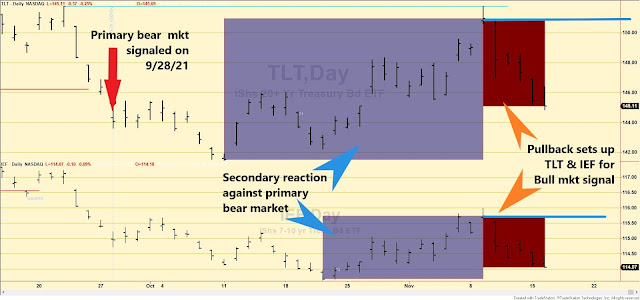 |
| If the blue horizontal lines (ride side of the charts) were jointly broken up, a primary bull market would be signaled. Let's wait and observe. |
B) Market situation if one sticks to the traditional interpretation demanding more than three weeks and 1/3 confirmed retracement to declare a secondary reaction.
The primary trend was signaled as bearish on 9/28/21. A more aggressive and legitimate interpretation would have signaled the bear market on 9/24/21. The explanations here.
TLT has rallied 21 trading days off its 10/11/21 bear market lows. IEF only rallied 13 trading days off its 10/21/21 bear market lows. So, if we adhere to the “strict” (and distorted) interpretation of the Dow Theory, we cannot declare the existence of a secondary reaction yet, as the time requirement has not been met. Absent the time requirement, no secondary reaction has been signaled. Thus, both the primary and secondary trends remain bearish.
Sincerely,
Manuel Blay
Co-Editor of thedowtheory.com
